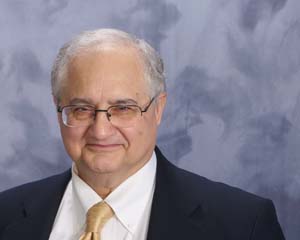Introduction to Distance Education: Higher Education
Dr. Farhad (Fred) Saba, Ph. D.
Founder, Distance-Educator.com
Today, almost all institutions of higher education in the United States offer some form of distance teaching and learning. A recent report by Babson survey Research Group (Allen & Seaman, 2013) indicated a steady growth in enrollments for online courses in recent years. In 2011, 6.7 million students took at least one online course. This is in contrast to a a study by the U. S. Department of Education that estimated there were 753,640 students formally enrolled in distance education courses in academic year 1994-95 (Lewis et al. 1999). In the 2000–2001 academic year, there were an estimated 3,077,000 enrollments in all distance education courses offered by 2-year and 4-year institutions pointing to the rapid increase in popularity of online courses.
In 2011, 6.7 million students took at least one online course.
Currently, with the recent growth of the field, the number of students who receive part or all of their education at a distance could be well over 9 million. Although most students take courses in institutions that offer both on-cmpaus and online courses (dual mode), there are a few private and state-finded institutions that are single mode autonomous virtual institutions only dedicated to offering online courses.
The Western Governors University (WGU) is an autonomous virtual institution established by the Western Governors Association in 1996. A notable characteristic of WGU is that it is a competency-based institution in which students can earn academic credit for learning experiences they have gained in non-academic arenas, such as work. (http:/www.wgu.edu).
Other institutions of higher education have not been as successful in initiating and developing autonomous or dual mode distance education programs in the U. S. For example, a group of organizations that included, Columbia University, University of Massachusetts, American Film Institute, the British Library, the Cambridge University Press, the London School of Economics, the Natural History Museum in London, the New York Public Library, RAND, the Science
Museum in London, the University of Chicago, the Victoria and Albert Museum and the Woods Hole Oceanographic Institution established an online for-profit higher education institution called Fathom.com. Columbia University provided most of the initial investment for this “digital consortium” which amounted to $30 million. The venture’s target market was individual learners who were interested in learning about a variety of subjects. Between 1999, and 2003 more than 65,000 students registered in 2000 courses offered by Fathom.com. Eventually, however, in March 31, 2003 the company folded. Commenting about its demise, Dr. Ann Kirschner, CEO of Fathom.com said: “The average consumer still doesn’t understand what online learning really is.” (Mitchell, 2003).
In contrast, eCornell.com was established by Cornell University as a for-profit corporation in September 18, 2000 to reach to the corporate training market at a distance. This was a more conservative approach than reaching individual learners attempted by Fathom.com, since higher education institutions have a long and established history of offering extension courses to business and industry. As early as the 1960s, Stanford University, for example, established a service to televise courses in engineering and management to the rapidly growing electronic industry in its surrounding area that has become famous now as the Silicon Valley.
REFERENCES
Laurie Lewis, L., Snow, K. Farris, E. and Westat (1999). Distance education at postsecondary education institutions: 1997-98. Retrieved from http://nces.ed.gov/pubs2000/2000013.pdf. National Center for Education Statistics, U.S. Department of Education.
Allen,I. E., and Seaman, J. (2013). Changing course: Ten years of tracking online education in the United States. Retrived from http://files.eric.ed.gov/fulltext/ED541571.pdf. Babson Survey Research Group and and Quahog Research Group, LLC.








